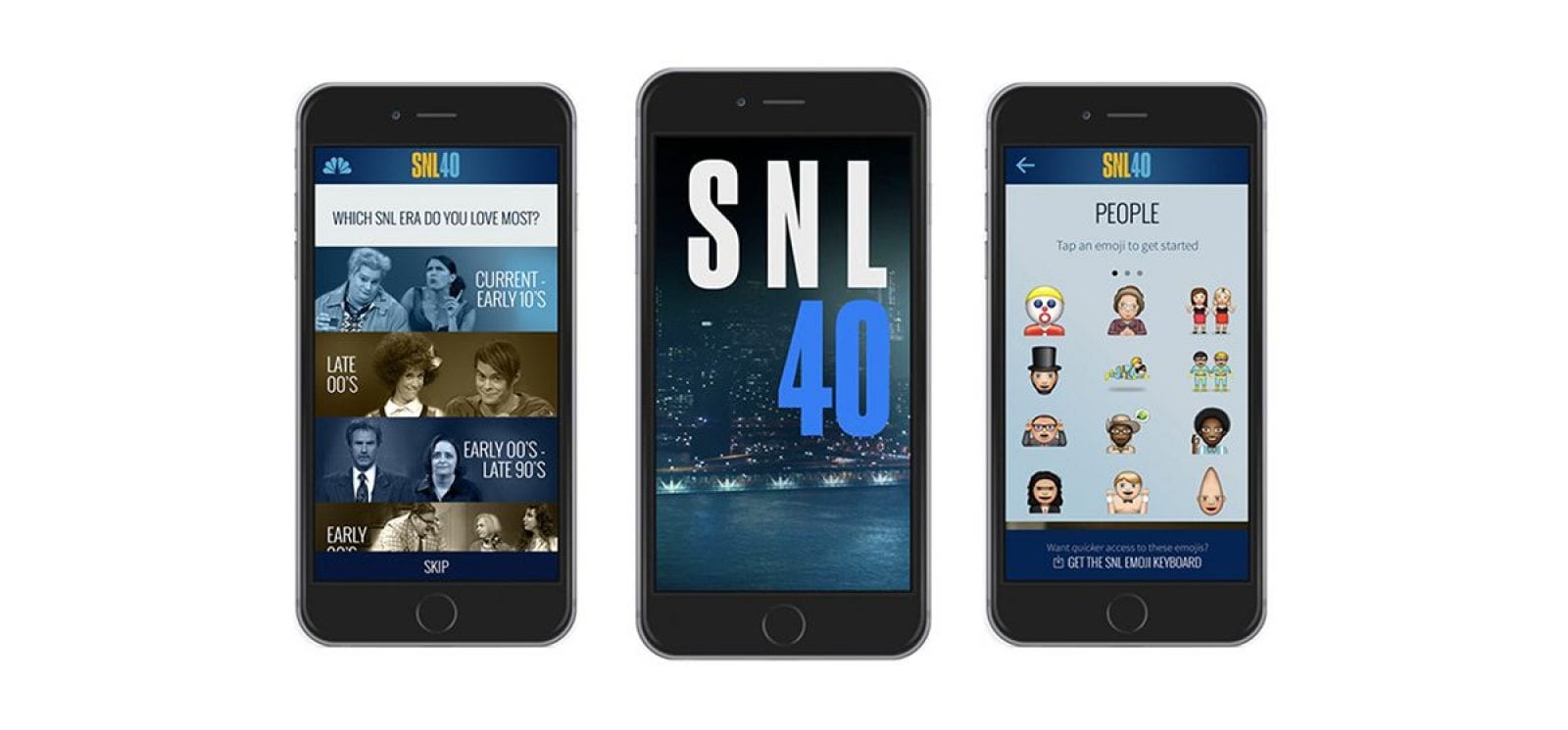At the Hollywood IT Summit on May 14, Michael Martin – SVP Product, Technology and Operations, NBC Entertainment Digital – spoke about the unique opportunity his team had to reinvent the way fans interacted with one of the network’s most famous and widely loved shows, Saturday Night Live.
To accompany the 40th Anniversary of Saturday Night Live, the network’s digital team wanted to do “something special” with all the great content the show has generated over the years. During that broadcast, which became the most successful live entertainment broadcast in the past 10 years, some of the best content from every era was featured, including the Bass-o-matic of the 70s, Wayne’s World of the 80s, Celebrity Jeopardy of the 90s and digital shorts from the 2000s.
This range of content mirrored what Martin and his team found when in their research: Everyone knew the show and was familiar with its great content over the years and most people even had a “golden era” of favorite shows. The problem was that, with the show’s history and consistency of quality, everyone had a different golden era! Also despite the show’s broad, multigenerational appeal, online viewership was almost always of more recent shows. Even though much of the show’s library was online in one way or another, the audience just wasn’t able to reach the content they liked best. To bridge this gap, Martin and his team set out to build a unique digital experience. They envisioned an app that would not only “reconnect all the fans to all of the content,” but also would give them an entirely new experience consuming SNL content.
Data Drives the Experience
To get started, the team had to address one of its biggest challenges: The data that would drive the experience. Part of the reason the SNL library wasn’t getting a lot of traffic is that the metadata surrounding it didn’t shed light on the content itself. The most reliable data consisted of dates, titles and characters. But this data just wasn’t enough as the sketch titles were often deliberately bland to conceal the joke (e.g., CPR Class), some characters’ names were never known (anyone remember Dooneese Maharelle?) and show fans seldom knew when sketches were actually aired.
What Martin and his team needed to do was capture what we all actually do know about the show – every character, cast member, season, impersonation and sketch and also the characteristics of each item. This data taken together would make up the world of the show and help people get their favorite content. For instance, for Dooneese Maharelle it is important to know that she has “tiny hands” and to actually access her clips you would have to know that she was part of repeating series called The Lawrence Welk Show. The world of data about the show would also have to fit together so that the team could create new experiences. For instance, at the HITS conference Martin pointed out the famous example of Sarah Palin who is a character (played by Tina Fey), a guest (when she appeared on the 40th Anniversary special) and also a cast member (for her role impersonating Tina Fey impersonating Sarah Palin). They needed to be able to capture all these different concepts (character, guest, cast member) and how they fit together to let you find just that one sketch and do the same for all the different concepts and themes of the show.
Sparse Data Is a Differentiator
In a traditional RDBMS, the method for capturing this type of data would be to create a record of all the clips with a tag for each item (Character = Dooneese Maharelle, Characteristic = tiny hands, Cast member = Kristen Wiig, etc.). And as each tag drives queries, just getting the Sarah Palin record straight so you could find the right clip would take quite a bit of data modeling! Sparse data is always inconvenient and tends to get eliminated — as every clip would have its own mini world of data. An alternative solution was needed.
So, the SNL team turned to smart content, the mix of metadata and semantics, as a means to model data. The world of the show is now described using a semantic ontology in which individual characters are all their own concepts. From Sarah Palin to Dooneese Maharelle, every character and all their specific characteristics are managed as separate semantic data in the same manner as cast members, seasons, themes and the many other types of data the team put together to describe the show. Each record has a metadata record, but instead of having lots of fields, this data has the core information (dates and titles) and then has semantic triples that represent where that clip belongs in the world of the show.

A snapshot of what the ontology looks like, showing the graph of relationships
To put all this data into action, the NBC team used MarkLogic’s Enterprise NoSQL database. With MarkLogic, the ontologies are stored as semantic triples and the metadata records are stored as NoSQL documents with embedded triples that link to the ontologies. This combination of NoSQL and semantic data is used to power the searches and queries that drive the SNL 40th Anniversary app (now available for iPad and Android) and the online site.
Semantics Drives Recommendations
This data and the ability to query is dynamically within MarkLogic also helped the team solve a key puzzle in the way they wanted users to experience the content. Instead of having the entry point be a search or browse, they wanted to the app to simply start to play video and let the users swipe back and forth through videos that the app recommends. To get the right video in front the user for that key first impression, the team needed a compelling predictive engine. The semantic data representing the world of the show gave the developers the data they needed to string together likely clips. But the team wanted to go even further, so in addition to all the data about the show, they also captured user watch event data logged as semantic triples (and captured anonymously or as part of user profiles and favorites).
To create dynamic personalized recommendations, the team leveraged MarkLogic’s ability to query the semantic data, the user information and the metadata, maintain data integrity and with transactions and execute computational complexity at scale. The result is that the app creates a dynamic recommendation to each individual user and responds with new recommendations based on what the user was doing in their current session.
Wrapping up his discussion at the Hollywood IT Summit, Michael Martin talked about the success of SNL’s new app. Having been featured so far in over 1200 articles, the app has greatly increased fan engagement with the show by delivering over 100 million videos to viewers across the globe. And the users have also changed how they interact with the clips. According to Martin, there is no more “one and done.” Instead, the network is seeing that with the immersive watch experience, fans are consuming the content in longer sessions and are making a “meal” out of all the great SNL “snacks.”
Having changed the way users experience great content, what’s next for the NBC Digital Entertainment team? Only Martin and his team know for sure, but we’re confident it won’t be the same old app experience ever again.

Matt Turner
Matt Turner is the CTO, Media and Manufacturing at MarkLogic where he develops strategy and solutions for the media, entertainment and manufacturing markets. Matt works with customers and prospects to develop MarkLogic enterprise NoSQL operational data hubs that enable them to get the most of their data and deliver their products to the fans, audiences and customers that love them.
Before joining MarkLogic, Matt was at Sony Music and PC World developing innovative information and content delivery applications.

